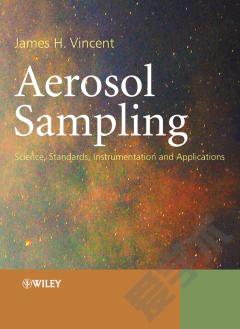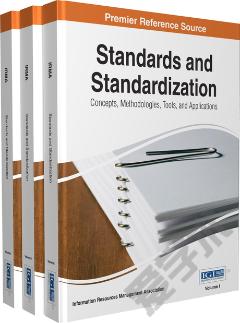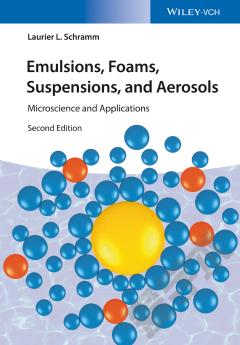Aerosol Sampling —— Science, Standards, Instrumentation and Applications
----- 气溶胶取样:学科、标准与应用
Part A: SCIENTIFIC FRAMEWORK FOR AEROSOL SAMPLING. Chapter 1: Introduction. Aerosols. Particle size. Elementary particle size statistics. Aerosol measurement. Sampler performance characteristics. References. Chapter 2: Fluid and aerosol mechanical background. Fluid mechanical background. Aerosol mechanics. Chapter 3: Experimental methods in aerosol sampler studies. Introduction. Methodology for assessing sampler performance. Scaling relationships for aerosol samplers. Test facilities. Test aerosol generation. Reference methods. Assessment of collected aerosol. Aerosol sampler test protocols and procedures. Chapter 4: The nature of air flow near aerosol samplers. Introduction. Line and point sink samplers. Thin-walled slot and tube entries. Thick-walled tubes. Simple blunt samplers facing the wind. Blunt samplers with orientations other than facing the wind. More complex sampling systems. Effects of freestream turbulence. Chapter 5: Aspiration in moving air. Introduction. Thin-walled tube samplers. Blunt samplers. Chapter 6: Aspiration in calm and slowly-moving air. Introduction. Sampling in perfectly calm air. Slowly moving air. Chapter 7: Interferences to aerosol aspiration. Introduction. Interferences during aspiration. Interferences after aspiration. Chapter 8: Mechanisms for aerosol particle size selection after aspiration. Introduction. Elutriation. Filtration by porous foam media. Centrifugation. Impaction. Diffusion. Other particle size-selective mechanisms. Part B: STANDARDS FOR AEROSOLS. Chapter 9: Framework for aerosol sampling in working and ambient environments. Introduction. Exposure to aerosols. Framework for health-related aerosol sampling. Non-health-related aerosol standards. References. Chapter 10: Particle size-selective criteria for coarse aerosol fractions. Introduction. Experimental studies of inhalability. Particle size-selective criteria for the inhalable fraction. Overview. Chapter 11: Particle size-selective criteria for fine aerosol fractions. Introduction. Studies of regional deposition of inhaled aerosols. Criteria for particle size-selective sampling for fine aerosol fractions. Overview. Chapter 12: Limit values. Introduction. Aerosol-related health effects. The processes of standards setting. Occupational exposure limits (OELs). Ambient atmospheric aerosol limits. Special cases. Part C: AEROSOL SAMPLING INSTRUMENTATION AND APPLICATIONS. Chapter 13: Historical milestones in practical aerosol sampling. Introduction. Occupational aerosol sampling. Ambient atmospheric aerosol sampling. Chapter 14: Sampling for coarse aerosol in workplaces. Introduction. Static (or area) samplers for coarse aerosol fractions. Personal samplers for coarse aerosol fractions. Analysis of performance data for inhalable aerosol samplers. Passive aerosol samplers. Chapter 15: Sampling for fine aerosol fractions in workplaces. Introduction. Samplers for the respirable fraction. Samplers for the thoracic fraction. Samplers for PM2.5. Thoracic particle size selection for fibrous aerosols. Sampling for very fine aerosols. Simultaneous sampling for more than one aerosol fraction. Chapter 16: Sampling probes for stack sampling. Introduction. Basic considerations. Stack sampling methods. Sampling probes for stack sampling. Sampling for determining particle size distribution in stacks. Direct-reading stack-monitoring instruments. Chapter 17: Sampling for aerosols in the ambient atmosphere. Introduction. Sampling for coarse 'nuisance' aerosols. Sampling for 'black smoke'. Sampling for total suspended particulate in the ambient atmosphere. Sampling for fine aerosol fractions in the ambient atmosphere. Meteorological sampling. Chapter 18: Sampling for the determination of particle size distribution. Introduction. Rationale. Aerosol spectrometers. Cascade impactors. Other spectrometers. Particle size distribution analysis by microscopy. Chapter 19: Sampling for bioaerosols. Introduction. Standards for bioaerosols. Technical issues for bioaerosol sampling. Early bioaerosol sampling. Criteria for bioaerosol sampling. Inertial samplers. Centrifugal samplers. 'Total' and inhalable bioaerosol. Other samplers. Chapter 20: Direct reading aerosol sampling instruments. Introduction. Optical aerosol-measuring instruments. Electrical particle measurement. Condensation nuclei/particle counters. Mechanical aerosol mass measurement. Nuclear mass detectors. Surface area monitoring. Analytical chemical methods. Bioaerosol monitoring. PART D: AEROSOL SAMPLER APPLICATIONS AND FIELD STUDIES. Chapter 21: Pumps and paraphernalia. Introduction. Air moving systems. Flowrate. Collection media. Analysis of collected samples. Chapter 22: Field studies of aerosol samplers in workplaces. Introduction. Personal and static (or area) sampling. Relationship between 'total' and inhalable aerosol. Converting particle counts to particle mass. Field experience with samplers for respirable aerosol. Classification of workplace aerosols. Diesel particulate matter. The future of workplace aerosol measurement. Chapter 23: Field studies of aerosol samplers in the ambient atmosphere. Introduction. 'Nuisance' dust. Total suspended particulate (TSP) and black smoke (BS). Black smoke and particle size fractions (PM10 and PM2.5). Transition to particle size-selective sampling. PM10. PM2.5. Personal exposures to PM10 and PM2.5. Classification of ambient atmospheric aerosols.
{{comment.content}}








 京公网安备 11010802027623号
京公网安备 11010802027623号